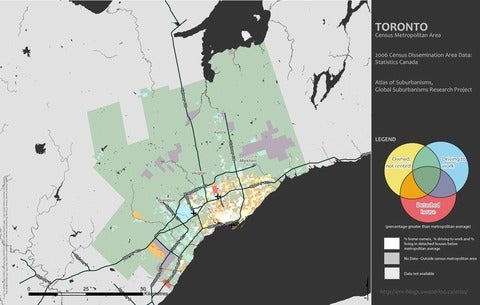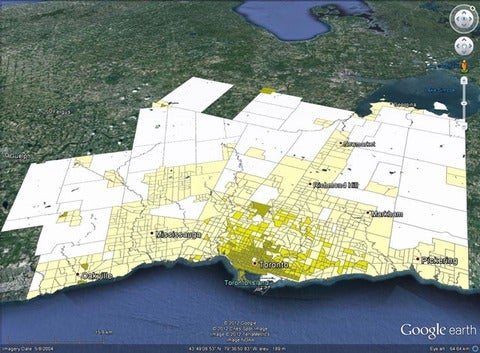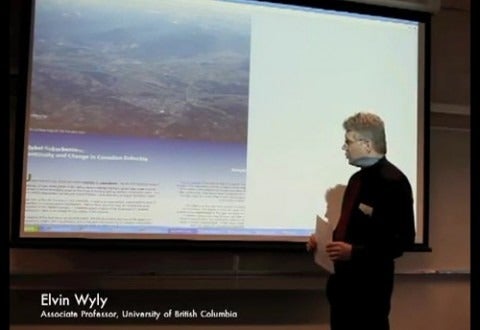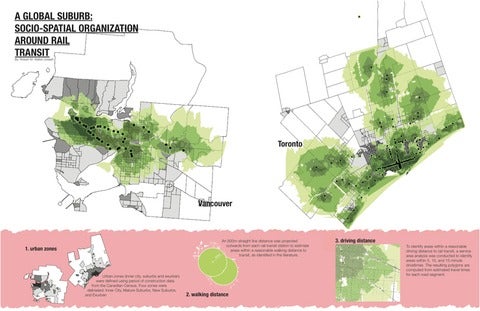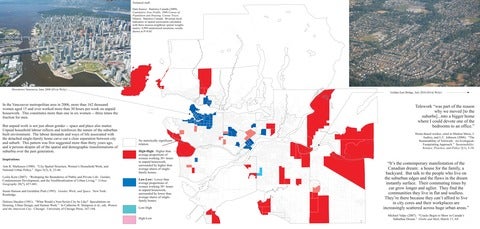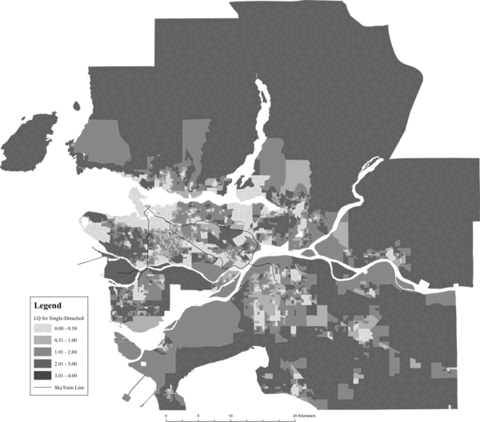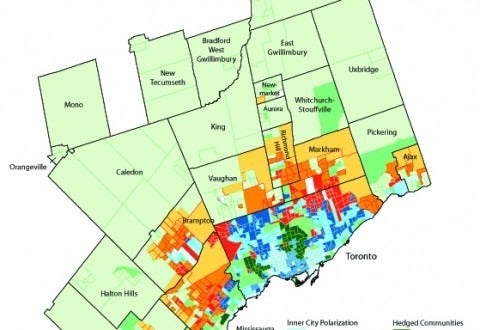Mapping the dimensions of suburbanisms
Pablo Mendez (University of British Columbia) offers an analytical writeup to accompany the most recent contribution to the Atlas data: a series of 69 maps covering 23 cities visualizing 3 sets of socioeconomic data themes. The result: a compelling set of data-rich maps showing interesting and surprising patterns of suburbanism across Canada.
Estimating Canada's suburban population
A team led by Professor David Gordon at Queen’s University estimates that up to two-thirds of Canadians may be living in suburban areas. They use Statistics Canada data to designate neighbourhoods as suburban or urban based on density and commuting patterns. Findings are presented in visually intriguing ways using a combination of census maps and Google Earth.
Continuity & Change: Elvin Wyly on suburbs
Elvin Wyly explains preliminary findings from our analysis of suburbanisms using Statistics Canada spatial and micro-data files.
Commuter rail transit in the suburbs
Robert Walter-Joseph, University of Waterloo, maps the transit serviced areas in Toronto and Vancouver.
Vancouver: Gender of Work
Elvin Wyly, University of British Columbia (UBC), offers a geospatial analysis of the gender of work in Vancouver.
Housing maps for Vancouver
Kevin Chan, University of British Columbia (UBC), maps out the location quotients of single-detached and apartment housing in Vancouver.
Ten Cities of Toronto
Liam McGuire of University of British Columbia (UBC) maps out what he calls the “Ten Cities of Toronto”.
